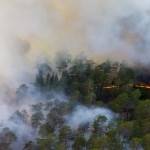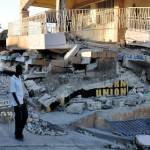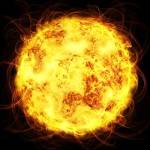Blizzard
By definition, a blizzard is an extended, severe snowstorm. In order to qualify as a blizzard, winds have to be at least 35mph and rage for a longer period of time—at least three hours or more. The amount of snowfall has little to do with a storm qualifying as a snowstorm, but rather the intensity of the wind and length of time. There are two other classifications for blizzards:
--Severe blizzard: winds over 45mph, temperatures at 10 Fahrenheit or lower, near zero visibility.
--Ground blizzard: no falling snow, snow from the ground is blown by the strong winds.
A nor'easter gets it's name from the direction of the oncoming winds. This occurs on the Atlantic side of Canada and East Coast of the USA. These storms can start as far south as the Gulf of Mexico or the North Atlantic Ocean. However, the most common usage of the name is in the coastal regions of Atlantic Canada and New England. These storms are similar to a hurricane. One of the deadliest blizzards in the USA—the Great Blizzard of 1888—was a nor'easter, killing 400 people after dumping 40-50 inches of snow.
What causes blizzards?
Blizzards are usually formed when the jet stream pitches very far south. This allows the cold air that comes from the north to collide with warm air coming from the south. This creates a strong storm system, usually developing on the northwest side of such storm systems.
Any area which is mostly flat is susceptible to blizzards, though there are some areas in the US, Australia, and the UK that suffer from blizzards more than others. However, the deadliest blizzard in recorded history occurred in Iran in 1972.
Dangers of blizzards
Blizzards are one of nature's deadlier storms, as the conditions make travel and movement hazardous. Snowstorms disrupt traffic, but blizzards make any kind of travel nearly impossible. Almost every blizzard results in at least a few deaths, with some of the bigger ones resulting in hundreds of people dying.
Visibility is drastically reduced, in some cases to as little as 3 meters or what is called zero visibility. In a ground blizzard, though no new snow is falling, the snow already on the ground is whipped up and around by the winds to where visibility is also close to zero.
Travel under these conditions is close to impossible. Cars have to come to a complete standstill as they can drive off the road. Because blizzards rage for so long, people can get trapped in their cars, freezing to death as they wait for it to clear. Once the storm is over, cars are often buried under mounds of snow, making it difficult for rescue teams to find them. Hypothermia sets in as people trapped outdoors try to find shelter and warmth.
Blizzards have been known to come suddenly and while it is possible to be warned in advance, it's not always possible to be entirely prepared for the intensity of the blizzard. Clearing roads is not possible until after the blizzard has passed and then takes a long time due to the intensity of the build up. The aftermath of the blizzard can be almost as dangerous as the storm itself, as people trapped inside vehicles, unheated buildings, or outdoors take longer to be found and brought to warmth and safety.
History of blizzards
Though not as common as snowstorms, tornadoes, or even hurricanes, blizzards are deadly every time they hit. Not all blizzards are mentioned here, not even all of the most severe. This is just a sample of the havoc that blizzards can wreak.
--The white winter of 1880-1881 is one of the earliest blizzards mentioned in history books. This is considered the worst winter in US history. Because the first blizzard hit in October, before most farmers had the opportunity to bring in their crops. One after the other the blizzards continued to hit, making travel impossible, even by train. People were at the brink of starvation and train services stopped completely by January 1880 as no matter how often they cleared the tracks, another storm would come and cover them again. The snow never thawed and on February 2, 1881 a nine day blizzard hit again. By then, towns and farmers had to tunnel through the snow to get to livestock, wood for heating, and supplies. Once the snow started melting, huge areas were flooded, washing away huge areas around the Missouri river. The town of Yankton, currently South Dakota, was nearly completely washed away by the overflowing river.
--The Iran Blizzard of 1972 is the deadliest recorded blizzard. Starting on February 3, until February 9, more than 10 feet of snow fell, the worst areas in Southern Iran getting up to 26 feet of snow. Whole villages died, one being completely buried beneath the snow. Approximately 4000 people died.
--The Armistice Day Blizzard in 1947 came somewhat unexpected, resulting in a lot of deaths. On the morning of the blizzard, the weather was warm, resulting in many hunters going out to take advantage of ideal conditions. Within a few hours, the blizzard hit, raging through the night and into the next day. 145 deaths were reported as a result of the 1,000 mile wide storm. Many hunters were not dressed warmly enough to withstand the wind and snow. Many were stranded on islands in the Mississippi, or drowned trying to get back to land.
--The Schoolhouse Blizzard in 1888 is different from the nor'easter and in some ways more heart breaking. Because the day started out relatively fair, people went about their lives, with children going to school and adults going to work. The storm hit early in the day, leaving thousands stranded; mostly children in their one-room schoolhouses. 235 people died; including children.
Although meteorologists are now able to more accurately predict blizzards, the storms still have the ability to cripple whole cities at a time, and deaths are almost always inevitable. Over the years, rescue missions during and after blizzards are becoming better and preparedness goes a long way towards preventing large amounts of casualties. It has also become considerably easier to notify people of oncoming storms, with more reliable predictions and getting the word out quickly and effectively.
Countries which are not used to large amounts of snow, extreme cold, and long periods of strong winds tend to have a harder time coping when the storms hit. Regardless of where the blizzards hit, there is never a way to be completely prepared. There is always a chance of power outages, communications systems breaking down, people going for long periods with little or no heat, and getting trapped outdoors or in a vehicle. During winter months, people are advised to pay close attention to weather warning coming over the radio or TV. There are weather websites set up to help people prepare for blizzards and post warnings when a snowstorm is being upgraded to a blizzard.





